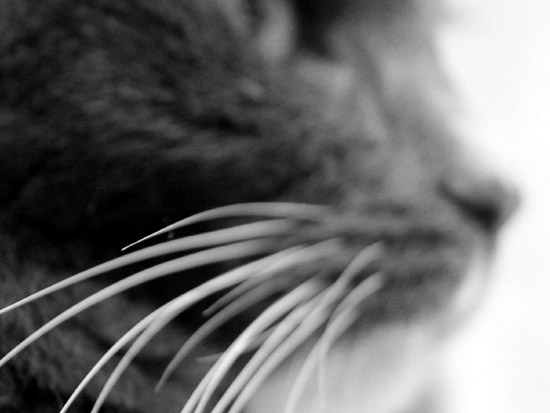MIT researchers reveal secrets of rats’ whiskers
 Washington, Feb 28: Researchers at the Massachusetts Institute of Technology have shed more light on how rats perceive their tactile environment, by discovering that the rodents use their whiskers in similar fashion to the way humans use their sense of touch.
Washington, Feb 28: Researchers at the Massachusetts Institute of Technology have shed more light on how rats perceive their tactile environment, by discovering that the rodents use their whiskers in similar fashion to the way humans use their sense of touch.
The researchers say that their findings open up new possibilities in examining similarities of perception across different species.
MIT neuroscientists used high-speed video to reveal rat whiskers in action and show the tiny movements that underlie the rat's perception of its physical environment.
The team found that, just as humans run their fingers across a surface to perceive different shapes and textures, rats use their whiskers in a similar way.
They also found that rats rely heavily on their whiskers to help them find their way in the dark and devote a great deal of their brain capacity to decode and process the raw tactile information.
"Now that we can see what the rat's whiskers are telling the brain, we can start to understand better how this amazing perceptual system works," said Christopher Moore, a member of the McGovern Institute for Brain Research at MIT and senior author of the study.
"This understanding is relevant not only to the human sense of touch, but to all forms of perception, because every sensory organ is an interface between the mind and the external world,” he added.
Moore explained that the length of the whiskers influenced the kind of information relayed to the rat's brain. With the shortest whiskers at the front of the snout, previous experiments had shown these resonate at a higher frequency but until now, no one had found the pattern of whisker movements in freely behaving rats.
"We knew from watching rats' behaviour that there must be whisker micromotions that were too rapid to measure using available recording techniques," explained Jason Ritt, a postdoctoral scientist in Moore's lab and first author of the study.
For the experiment, Ritt devised a video system, which was capable of capturing whisker movements at the rate of 3,200 frames per second, 100 times faster than typical home videos.
He then devised an automatic tracking system to analyse the video data, which was about 1 gigabyte per second.
Researchers trained rats to identify between a rough and a smooth surface rewarding them with chocolate milk when they chose correctly. The team then analysed the difference in patterns of movement.
Analysis of the video revealed an unexpectedly complex pattern of movements, including periodic 'waves' of motion when the rat touched a smooth surface, and irregular, large and high-velocity movements when contacting a rough surface.
"These patterns are larger and more complex than anything previously observed in anaesthetized animals or plucked whiskers, but they are the key to a rat's perceptions and behaviour," Moore said.
The study appears in the February 28th issue of Neuron. (ANI)